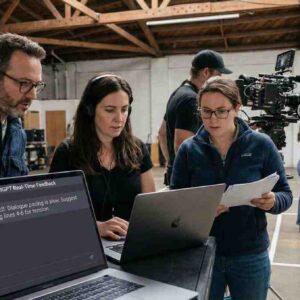Empowering Technological Advancements Through State Support
Introduction:As Artificial Intelligence (AI) continues to be a driving force behind technological innovation, the Indian government recognizes its potential and is actively supporting research and development in this field. This commitment is manifested in various funding programs designed to foster innovation and make India a hub for AI research and development.
Overview of Government Funding Initiatives:
Department of Science and Technology (DST):One of the primary sources of AI research funding comes from the Department of Science and Technology. The DST offers grants specifically for AI projects through its “Fund for Improvement of S&T Infrastructure” (FIST) program. These grants are available to public and private universities as well as research institutions working on pioneering AI technologies. Detailed eligibility criteria and funding guidelines are regularly updated on the DST’s official website.
Ministry of Electronics and Information Technology (MeitY):MeitY is instrumental in funding AI initiatives, particularly those that focus on the integration of AI in sectors like healthcare, agriculture, and smart cities. MeitY’s “Visvesvaraya PhD Scheme” is notable for promoting doctoral research in AI, providing fellowships and research grants to PhD students at Indian institutions. Additionally, the “Digital India” initiative includes substantial allocations for startups and SMEs developing AI applications intended to enhance e-governance services and public welfare.
Atal Innovation Mission (AIM):Under the auspices of NITI Aayog, the Atal Innovation Mission funds and supports startups and institutions to promote innovation in AI. AIM has set up Atal Incubation Centres (AICs) across the country, which provide infrastructure, mentorship, and financial assistance to AI startups. This initiative is aimed at creating a sustainable ecosystem for high-impact entrepreneurship in AI.
Defense Research and Development Organization (DRDO):DRDO has launched specific programs for developing AI technologies in defense applications. These programs offer funding for projects that can lead to innovations in areas such as autonomous vehicles, robotics, and surveillance systems. The details of these funding opportunities are typically announced through DRDO’s official publications and calls for proposals.
Challenges and Considerations:
Navigating the Application Process:One challenge for innovators is the complex and competitive nature of securing government funding. The application process can be rigorous, requiring detailed proposals and adherence to specific research objectives that align with national priorities.
Ensuring Broad Access to Funds:Ensuring that AI funding opportunities are accessible to a diverse range of innovators across different regions and sectors remains a challenge. The government is working to decentralize funding mechanisms to promote wider access and reduce disparities in resource allocation.
Conclusion:The Indian government’s strategic funding of AI research underlines its commitment to fostering innovation and maintaining competitive edge in the global technology arena. By providing financial support through various initiatives, the government is not only enhancing the country’s research capabilities but also encouraging the practical application of AI to solve complex societal challenges. As AI continues to evolve, these funding programs are crucial for nurturing the next generation of AI pioneers and entrepreneurs in India.
Sources:
- Department of Science and Technology
- Ministry of Electronics and Information Technology
- NITI Aayog’s Atal Innovation Mission
- Defense Research and Development Organization













